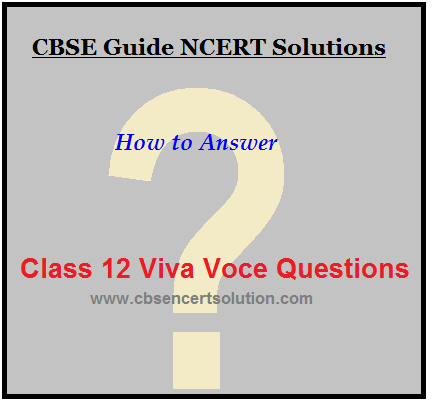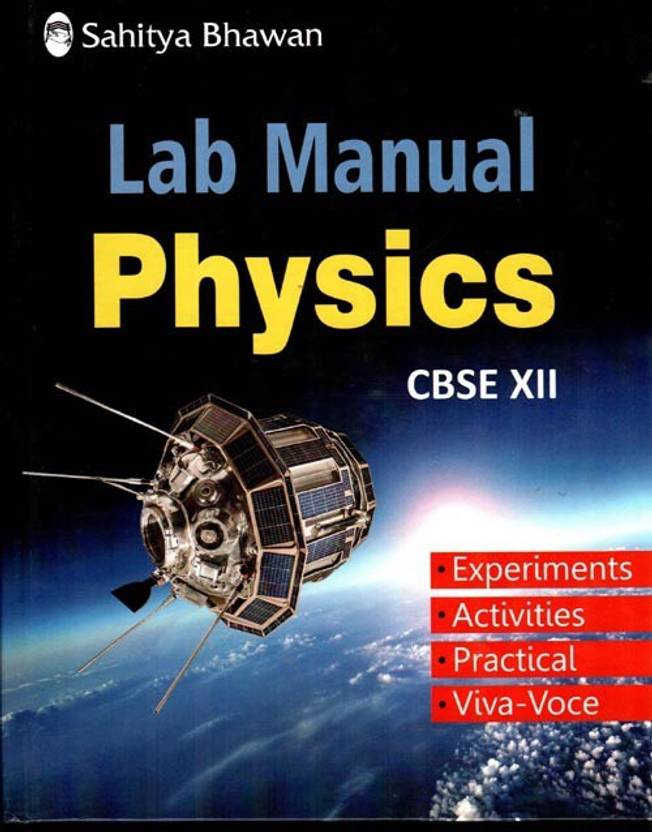Cbse Class 12 Practical Physics Lab Manual
Electric Charges; Conservation of charge, Coulomb’s law-force between two point charges, forces between multiple charges; superposition principle and continuous charge distribution. Electric field, electric field due to a point charge, electric field lines; electric dipole, electric field due to a dipole; torque on a dipole in uniform electric field. Electric flux, statement of Gauss’s theorem and its applications to find field due to infinitely long straight wire, uniformly charged infinite plane sheet and uniformly charged thin spherical shell (field inside and outside.) Electric potential, potential difference, electric potential due to a point charge, a dipole and system of charges; equipotential surfaces, electrical potential energy of a system of two point charges and of electric dipole in an electrostatic field. Conductor and insulators, free charges and bound charges inside a conductor. Dielectrics and electric polarization, capacitors and capacitance, combination of capacitors in series and in parallel, capacitance of a parallel plate capacitor with and without dielectric medium between the plates, energy stored in a capacitor. Van de Graaff generator.

Electric current, flow of electric charges in a metallic conductor, drift velocity, mobility and their relation with electric current; Ohm’s law, electrical resistance, V-I characteristics (linear and non- linear), electrical energy and power, electrical resistivity and conductivity. Carbon resistors, colour code for carbon resistors; series and parallel combinations of resistors; temperature dependence of resistance. Internal resistance of a cell, potential difference and emf of a cell, combination of cell in series and in parallel. Kirchhoff’s laws and simple applications. Wheatstone bridge, metre bridge. Potentiometer – principle and its applications to measure potential difference and for comparing emf of two cells; measurement of internal resistance of a cell. Concept of magnetic field, Oersted’s experiment.
Cbse Class 12 Physics Textbook

Biot – Savart law and its application to current carrying circular loop. Ampere’s law and its applications to infinitely long straight wire, straight and toroidal solenoids. Force on a moving charge in uniform m agnetic and electric fields. Force on a current-carrying conductor in a uniform magnetic field. Force between two parallel current-carrying conductors-defi nition of ampere. Torque experienced by a current loop in uniform magnetic field; moving coil galvanometer – its current sensitivity and conversion to ammeter and voltmeter.
Current loop as a magnetic dipole and its m agnetic dipole moment. Magnetic dipole moment of a revolving electron.

Magnetic field intensity due to a magnetic dipole (bar magnet) along its axis and perpendicular to its axis. Torque on a magnetic dipole (bar magnet) in a uniform magnetic field; bar magnet as an equivalent solenoid, magnetic field lines; Earth’s magnetic field and magnetic elements. Para-, dia- and ferro – magnetic substances, with examples. Electromagnets and factors affecting their strengths. Permanent magnets. Reflection of light, spherical mirrors, mirror formula.
Refraction of light, total internal reflection and its applications, optical fibres, refraction at spherical surfaces, lenses, thin lens formula, lens-maker’s formula. Magnification, power of a lens, combination of thin lenses in contact. Refraction and dispersion of light through a prism. Scattering of light – blue colour of the sky and reddish appearance of the sun at sunrise and sunset. Optical instruments: Human eye, image formation and accommodation, correction of eye defects (myopia, hypermetropia, presbyopia and astigmatism) using lenses. Microscopes and astronomical telescopes (reflecting and refracting) and their magnifying powers.
Wave optics: wave front and Huygens ’ Principle, reflection and refraction of plane wave at a plane surface using wave fronts. Proof of laws of reflection and refraction using Huygens ’ Principle. Interference, Young’s double slit experiment and expression for fringe width, coherent sources and sustained interference of light. Diffractio n due to a single slit, width of central maximum. Resolving power of microscopes and astronomical telescopes. Polarisation, plane polarised light; Brewster’s law, uses of plane polarised light and Polaroids.
Cbse Class 12 Physics Syllabus
Physics Practicals For Class 12 Physics is one of the most important subjects in Class 12. As the CBSE exam approaches, students get busy preparing for different subjects. But an essential part of the is the practical exams which consist of 30 marks. Students must know all the experiments along with theorems, laws, and numerical to understand all the concepts of 12th standard physics in a detailed way. Two experiments (8 + 8 marks) are asked from each section in the practical exam.
The experiment records and activities consist of 6 marks, the project has 3 marks and viva on the experiment consist of 5 marks. The Physics Practicals For Class 12 CBSE is given here so that students can understand the experiments in a better way. Students are suggested to study the theory and law behind the experiment properly before performing the experiment.